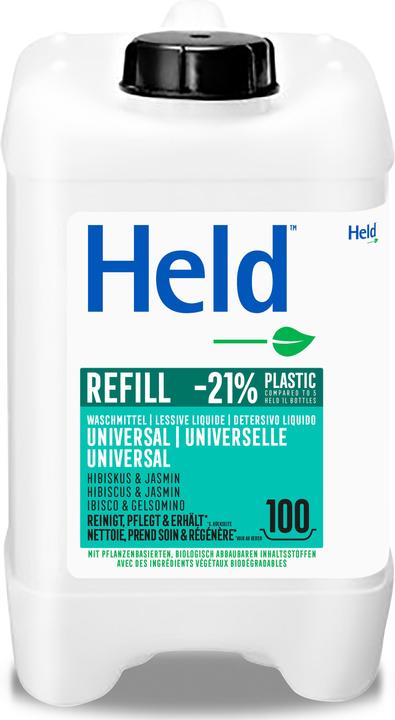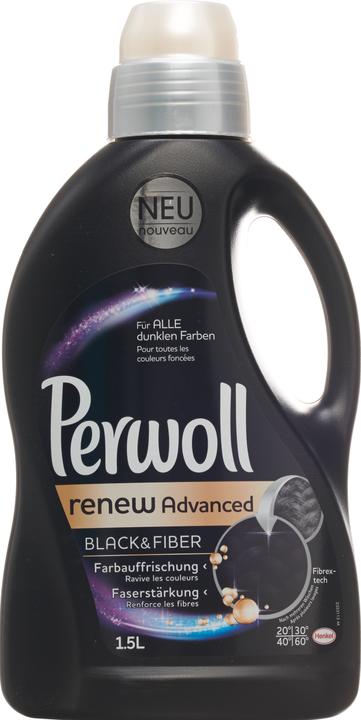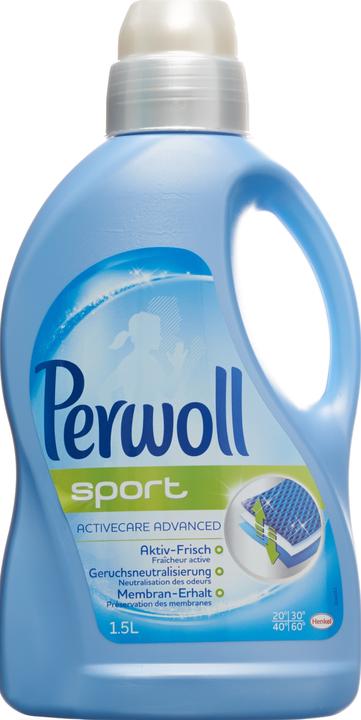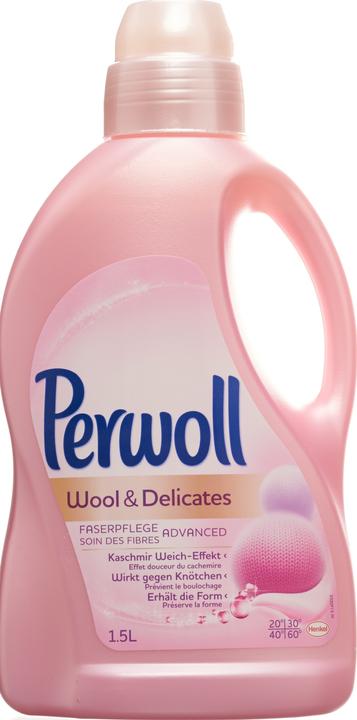
Ideal / Eswacolor Back 2 White
1 Wash cycle, Washing powder

Washing dirty clothes by hand has been a thing of the past since the invention of the washing machine. Despite sophisticated technology, it's not quite as easy as it often sounds. Here I explain how to use which detergent and when.
Open the washing machine, put the dirty laundry in, close the washing machine, pour in the detergent, press the button and soon the clothes are clean again as if by magic. Sounds simple and it is. However, the correct dosage of detergent, its form and the selected temperature are crucial if you don't want to damage your clothes with every wash and still get them clean. You can find out what to look out for in the following lines.
You should use this detergent for white and easy-care clothes without colours. It bleaches the textiles during the washing process and keeps them white. You should therefore keep your coloured laundry away from it. You will also often find it labelled specifically as a detergent for white laundry (and not as a heavy-duty detergent).

Ideal / Eswacolor Back 2 White
1 Wash cycle, Washing powder


Held Universal
100 Washing cycles, Liquid detergent
You can find all heavy-duty detergents at Galaxus here.
As the name suggests, this detergent is recommended for coloured clothes. It ensures that the fibres are well preserved and the colours do not lose their radiance. It should also prevent the colour particles from coming off and transferring to other items of clothing.
You can find all colour detergents at Galaxus here.
They ensure that even delicate textiles can be washed without hesitation. There are various detergents for a wide range of applications: for black laundry, for sportswear or for sensitive skin. There are also various products for whites or wool that are gentle on clothes. To avoid wasting mild detergents, you should only buy them if you have enough clothes that are suitable for them. Otherwise, they are simply not worth buying.



Filetti Sensitive
10 Washing cycles, Liquid detergent
You can find all mild detergents at Galaxus here.
Wool is one of those textiles that also require special care. The fibres are comparable to human hair, which is why the detergent is often similar to shampoo. This is because if you use conventional detergents, the enzymes they contain destroy the structure of the wool.

Held Wool & Fine
22 Washing cycles, Liquid detergent

Coral Wool & Silk
25 Washing cycles, Liquid detergent

You can find all wool detergents at Galaxus here.
This ensures that the laundry remains soft even after repeated washing. In addition, they are often scented so that the textiles smell stronger than with conventional detergents. The problem with fabric softeners is that they are added in the last wash cycle and are therefore not washed out afterwards. One of the consequences of this is that towels, for example, no longer dry efficiently after being treated with a fabric softener.
You can find all fabric softeners at Galaxus here.
The basic rule is: less is not more. If you use too little detergent, your clothes will suffer and won't get really clean. Too much detergent may clean, but it is expensive and bad for the environment. You will always find the correct dosage on the detergents - it's not annoying marketing jargon, it's a guide.
In addition to this information, you should also find out about the water hardness in your region. The harder the water, the more detergent you need. You should also wash heavily soiled and lightly soiled clothes separately. This is also indicated by the detergent manufacturers: more dirt equals more detergent. And: you only need to add half the detergent for half the laundry load.
Here I can give you the following tips: Liquid detergents and also capsules - which usually also contain liquid - have more washing-active substances, known as surfactants, than powders. This tends to make the laundry cleaner.
Liquid detergents, which are sold in large containers, often contain preservatives to prevent bacteria from forming or multiplying. These substances are harmful to water and the environment, which is why washing powders are often recommended.
With an identical washing effect, capsules are generally more expensive than bulk packs of washing powder or liquid detergent. They are also harder to dose and can be confused with sweets by small children.
Never wash your laundry at 90 degrees. This is because temperatures above 60 degrees prevent the detergent enzymes from working, rendering them useless. As a general rule, keep the temperature as low as possible. The vast majority of germs are washed out at 30 degrees. 60 degrees is only needed for stubborn dirt, illnesses or bed lice, for example.
Longer running times at lower temperatures save a lot of energy, but the laundry still gets clean. If you have time, run your laundry at 30 degrees for three hours instead of washing it at 60 degrees for an hour. Heating the water to 60 degrees requires significantly more electricity.
One disadvantage of lower temperatures is the risk of germs and unpleasant odours forming in the washing machine. However, a 60-degree wash once a month with heavy-duty detergent powder is sufficient for this. This is because it contains bleach, which kills germs very efficiently.
When I'm not stuffing my face with sweets, you'll catch me running around in the gym hall. I’m a passionate floorball player and coach. On rainy days, I tinker with my homebuilt PCs, robots or other gadgets. Music is always my trusted companion. I also enjoy tackling hilly terrain on my road bike and criss-crossing the country on my cross-country skis.
Practical solutions for everyday problems with technology, household hacks and much more.
Show all